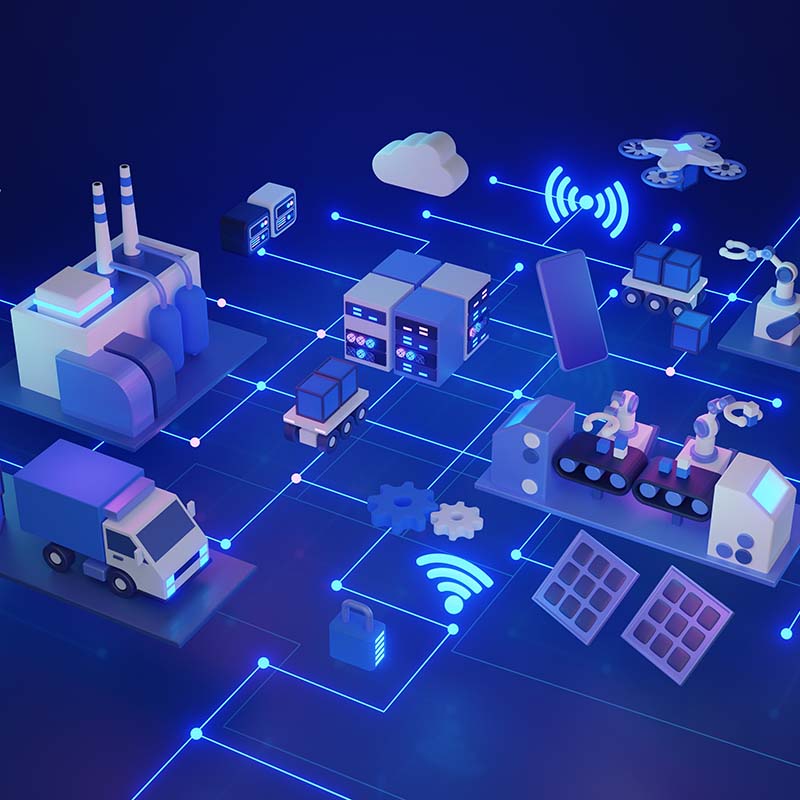The edge is emerging as the next new frontier in data processing and management. It moves the computing process to the “edge” of the network—its closest possible proximity to end users and their devices—to reduce latency and optimize infrastructure bandwidth allocation.
This is fast becoming a competitive imperative in a world marked by a demand for real-time information, hyper-relevant experiences, and remote and decentralized business operations.
As Forbes Technology Council member Bruce Kornfeld recently wrote in his 2023 edge computing trends summary: “Running all applications in the cloud is no longer an option due to cost, latency and uptime constraints.”
In his 2024 Predictions article, he noted: “With advanced analytics solving real-time problems, the amount of data needed at the edge is booming, but only some of this will be sent offsite to a corporate data center or cloud. Consequently, I believe edge data management will become known as the go-to IT footprint.”
Still, the edge can’t support large-scale operations on its own. To achieve optimal flexibility and agility without sacrificing compute or storage capacity, smart organizations holistically integrate cloud and edge strategies.
Recent research found that enterprises that achieve “super integration” are 4X more likely to achieve accelerated innovation, 9X more likely to increase efficiency, and nearly 7X more likely to reduce costs. It’s no wonder that 80% of organizations intend to fully integrate edge and cloud within the next three years.
To do so successfully, it’s important to explore key differences and synergies between cloud and edge solutions to understand how they can be used together to meet specific business needs.
The Evolution of The Edge
The concept of “The Edge” and how it can impact the user experience has been around for decades. Steve Ginsburg, CIO Technology Analyst at GigaOm and the former CIO and VP of Technical Operations at Pandora, wrote about its evolution for Nutanix.CXO Focus.
“Until recently, the term ‘edge’ was used predominantly in the context of communications networks,” Ginsburg wrote.
“In networking parlance, the edge signifies a device, usually a router. This equipment linked local corporate networks to a wide-area network (WAN) and/or the internet. When mobile networks took off, of course, the network edge expanded to include anywhere there was a user with a smart mobile device and a network connection.”
Today, edge computing is certainly at the center of day-to-day life, from a business perspective, but also at an individual and societal level. People interact with edge technology daily, often without even knowing it.
Common individual use cases for edge computing include:
Smart vehicles that analyze local data and make decisions for drivers about the quickest and safest routes, while alerting them in real-time about potential dangers (ex: driver swerves out of driving lane, or another car pulls out behind them)
Smart home technologies like automated thermostats and smart speakers that analyze local data to make decisions personalized to the homeowner
Wearable healthcare IoT devices that collect biometric data and alert users (and often their physicians) when something isn’t right
Smart security and surveillance systems that recognize unusual activity and alert the homeowner immediately
Retail shopping technologies such as smartphone apps that provide location-specific deals or product recommendations as a shopper walks around the store
For businesses, edge computing is crucial for managing the type of remote work environments and global, decentralized operations that are now the norm in a post-pandemic and increasingly digitally-driven world.
Even more critically, edge computing can accelerate data transmission in life-or-death scenarios like disaster relief and military missions, enhancing situational awareness with technologies such as satellite imagery and real-time GPS location tracking.
In every case, the power of the edge is its ability to bring data as close as possible to its source, reducing latency and driving new value rooted in proximity.
Organizational Benefits of Edge Computing
There are advantages edge computing delivers that simply aren’t possible for infrastructures that rely on cloud computing alone. More specifically, in situations where data cannot be moved closer to the data center, the edge moves the data center itself.
“Things that require real-time performance are going to tend to be done at the edge,” said Adam Drobot, Board Chairman at OpenTechWorks, Inc. “Edge computing will take its place in a spectrum of computing and communications technologies as another place where system architects can place computing workloads.”
For organizations that can do this strategically and successfully, the benefits of edge computing in over the cloud and data centers are numerous, and include:
Lower latency: The less data needs to travel, the faster it can be processed. Edge computing accelerates AI and ML models and enables AR and VR-related applications by processing input data instantaneously.
Better accuracy: AI-based programs need a huge sampling size to deliver accurate learnings. In low-bandwidth cloud environments, the size of the dataset fed into the ML model is controlled or kept to a minimum level. But this is not a concern at the edge— multiple models can run simultaneously along with data feedback loops to improve the accuracy of the model.
Wider reach: Internet access is a basic requirement of the cloud model. The edge, however, can process data locally with containerized code even if there is no network connection. This extends the reach of critical business workloads to previously inaccessible remote locations while granting greater operational autonomy to these branches.
Lower costs: The edge saves network bandwidth costs by storing and processing data at remote and branch offices. This also complements the OPEX-focused pricing model of the cloud.
Granular security: Sensitive or regulated data collected at the edge is stored at the same location or region. As a result, organizations can better comply with governance, compliance or privacy regulations, implement “just right” physical and digital security policies, and reduce exposure.
Without edge computing, many organizations will soon be (or already are) unable to operate at the speed and scale today’s competitive landscapes demand, or to meet modern customer experience expectations across industries.
But in an IT landscape that has been so heavily driven by cloud adoption in recent years, many IT leaders are understandably left with questions about how cloud and edge might fit together.
Cloud and Edge: A Complementary Pair for the Modern Enterprise
The demand for edge computing is rooted in the impracticality, in many scenarios, of transmitting data back and forth from traditional cloud environments and data centers.
For example, when a wearable IoT device sends biometric data to the cloud for analysis and receives it back to the device, adverse symptoms could already have occurred. Smart cars don’t have time to communicate with the cloud when accidents happen in milliseconds.
In retail scenarios, personalized deal offers and other product recommendations would not be as effective if they weren’t delivered until after the buyer left the store.
Real-time data used to inform executive decisions is often the difference between gaining a competitive advantage or lagging in high-stakes business environments. Even the slightest increase in latency can dictate mission success or failure in the middle of a military mission.
These and other real-world use cases for edge technology are wide-ranging and diverse—and they’re becoming more prevalent as our world gets more remotely connected.
But edge computing will never replace the cloud. While its speed and potential for localized, situationally relevant applications are unmatched, the edge can’t achieve the high-capacity data processing capabilities or deliver the vast resources the cloud provides.
For modern enterprises, the key to reaching full performance potential lies in leveraging cloud and edge as complementary forces. Then, at every level, organizations can access the services and capabilities necessary to meet their unique business needs.
“Even public clouds themselves have evolved to offer provider-specific differentiated services, rather than competing as commoditized utilities,” said Greg White, Senior Director of Strategic Marketing at Nutanix. “But more generally, edge computing is a recognition that enterprise computing is heterogeneous and doesn’t lend itself to limited and simplistic patterns.”
“Both are good depending on the use case, workload, and business need,” he continued. “Being able to do both without creating separate management, cost structure, and employee knowledge silos is important and valuable.”
Hybrid and Multicloud – The Best of Both Worlds
According to Greg, organizations should strive for an IT infrastructure that is flexible and able to easily leverage data centers, cloud, and edge.
“That way,” he shared, “They can adapt without ripping out the plumbing every time there’s a new need.”
The best solution is a hybrid and/or multicloud environment designed to integrate with edge devices, systems, and infrastructures. In hybrid and multi-cloud environments, edge computing can process data locally, reducing latency.
This is particularly important for time-sensitive applications like IoT devices, where sending data to a central cloud for processing would be too slow.
Edge computing can offload certain tasks from the cloud, which improves performance and efficiency. For example, initial data processing can be done at the edge, and then the processed data can be sent to the cloud for further analytics or long-term storage.
Similarly, more critical data can be processed and stored locally, while less sensitive data can be stored in the cloud. For optimal security, data can be encrypted at edge locations before it’s sent to the cloud, ensuring it can’t be intercepted during transmission.
This flexibility is crucial in hybrid and multicloud environments where data management and storage can be optimized for cost, performance, and security. It also enhances compliance with location-specific data privacy and management regulations.
Finally, in hybrid or multicloud environments edge computing provides additional resilience. If cloud services are temporarily unavailable, the edge can continue processing data and maintain operational continuity.
In short: The edge and cloud aren’t competing options, but rather a complementary pair that can help enterprises meet a wider range of competitive, regulatory, strategic, and customer demands, all while optimizing costs and efficiencies in a continuous way.
“I think it’s going to be very rare that an application will live only in edge computing,” said Dalia Adib, Director, Edge Computing Consulting at STL Partners. “It’s going to need to communicate with other workloads that are in the cloud or in an enterprise data center or on another device.”
Operations that can be executed faster and better at the end device can be assigned to the edge, while applications that aggregate data from multiple sources and/or perform large-scale operations can stay in the cloud.
The ability to design the right combination of edge and cloud systems helps companies match their IT infrastructure to their business models, organizational structures, and workflows.
How Nutanix Powers Organizations on the Edge
We know by now that edge computing isn’t a replacement for cloud computing. It’s an enhancement. Douglas Comer, author of “The Cloud Computing Book,” recently drove this point home in his exclusive interview with Nutanix.
“[Edge computing is] not going to ever overtake cloud data centers, because there are lots of things that you can’t do in an edge data center,” Comer emphasized. “But it is going to be a supplement because you can do things in an edge data center that you can’t do in the cloud. It’s all about latency.”
In other words: Cloud and edge have different but complementary features and capabilities, and they’re both more powerful when integrated with the other.
With both implemented, enterprises can achieve low-latency and even real-time data analysis and transmission to drive personalized and hyper-relevant user experiences. At the same time, they can maintain the massive computing capacity and storage power of the cloud.
Editor’s note: This is an update to the article originally published on September 29, 2022.. Read customer stories to learn how the Nutanix Cloud Platform allows organizations to run applications and data anywhere.
Dipti Parmar is a marketing consultant and contributing writer to Nutanix. She writes columns on major tech and business publications such as IDG’s CIO.com, CMO.com, Entrepreneur Mag and Inc. Follow her @dipTparmar or and on LinkedIn.
© 2024 Nutanix, Inc. All rights reserved. For additional information and important legal disclaimers, please go here.







